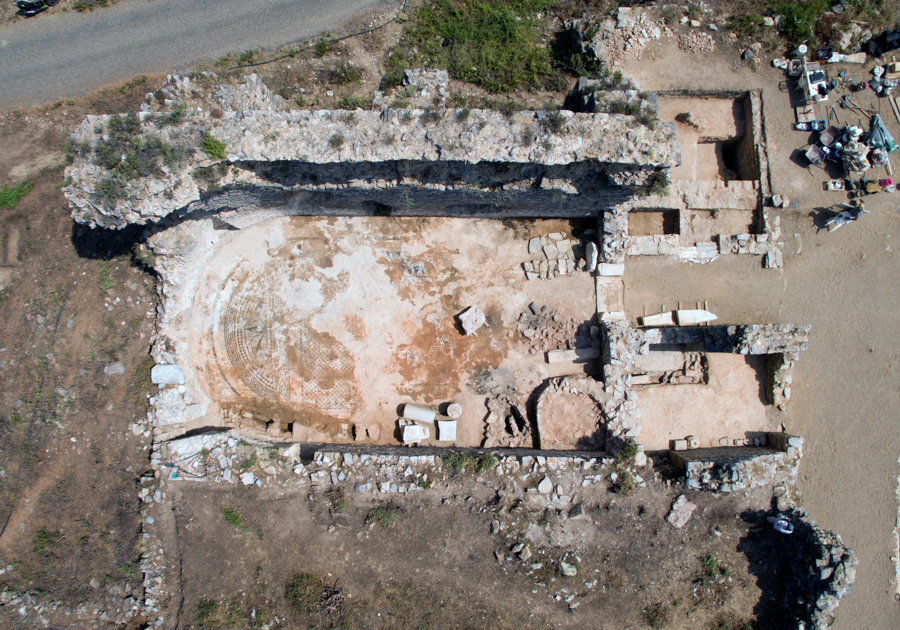I didn’t know a thing about art history, but… for the first time in my academic career, my visual intelligence was required of me. I realized that I was able to learn things visually that I couldn’t learn in other ways… this became my strategy for understanding anything else.
You can’t change the story, but you can change the way you tell it and what you focus on. You can’t rewrite history, but you can shake it up.
The BA in Art History
The BA in Art History provides a broad foundation in analyzing and researching, as well as writing and speaking about art in its various contexts. Art historians at UNL explore artworks not only through traditional approaches of field research and writing but also through creative or curatorial work, allowing them to take an active role in their communities. Working closely with campus museums such as the Sheldon Museum of Art, the Great Plains Museum, and the University of Nebraska State Museum, the program employs modes of thinking from disciplines like archaeology, anthropology, design theory, the digital humanities, and women’s and gender studies, to ask new questions about art’s work in the world.
Career opportunities in art history are numerous, and have expanded dynamically within the last 15 years. Many art history majors work in digital programming, public programs, and education, as museums and galleries have broadened their social functions and their range of audiences. Because art historians engage with objects or images from many different viewpoints and consider numerous types of audiences, their skills are also attractive in the broader job market, at advertising agencies, marketing firms, design companies, think tanks, and government. Some work as public art coordinators, art therapists, or arts and humanities policy writers. Still others run alternative spaces or art/design collectives.
The Double Major in Art History
Art History is a particularly compatible second major and provides good preparation for law school and medical school. Over the years, students have combined their art history degrees with a broad range of other majors, including Modern Languages, Anthropology, Classics, English and Graphic Design.
The MA in Art History
The M.A. Art History program at the University of Nebraska-Lincoln focuses on the latest pedagogical and professional practices in the discipline, anticipating and shaping the art historical work of the future. With around five students accepted per year, this intimate program applies a variety of lenses such as queer theory, material culture studies, and histories and theories of sensory perception.
The two-year program prepares students for full-time placements upon graduation, either in fully-funded PhD programs in art history, or in competitive curatorial, gallery, nonprofit, and research posts. Enrollees in the MA program specialize in Greek and Roman Art and Archaeology; Renaissance/Baroque; American Art; or Global Contemporary Art. Recent students have undertaken sub-specializations in fields such as such as Digital Humanities (at UNL’s internationally-known Center for Digital Research in the Humanities), Museum Studies, Environmental Humanities, and Great Plains Studies. Growing alliances with the Water for Food Global Institute and the Johnny Carson Center for Emerging Media Arts support and encourage additional transdisciplinary research, emphasizing field-specific skills in writing and data visualization.
If I major in art history, what will I do after graduation?
A degree in art history will prepare you for a wide variety of careers in art and non-art related fields. As an art history major, you will learn to think critically; to write persuasively; to plan and execute long term projects - skills that are highly desired among today's employers.
The BA in Art History also provides excellent preparation for professional or graduate programs, including arts management, museum studies, historic preservation, conservation, journalism, law, business, and library or information sciences.
A degree in art history prepares you for an entry level position in the following art-related fields. Your skills will be transferrable to a host of other career possibilities as well.
- art galleries
- public art centers
- art libraries
- art buyers
- art consultants
- art publications
- art auction houses
- art museums
A MA in Art History prepares the student for teaching in community or junior colleges, but a PhD is necessary for teaching and research positions in colleges and universities, and is increasingly required for museum work.
For more information about Art History at UNL, please contact Prof. Andrea Bolland at abolland1@unl.edu.







